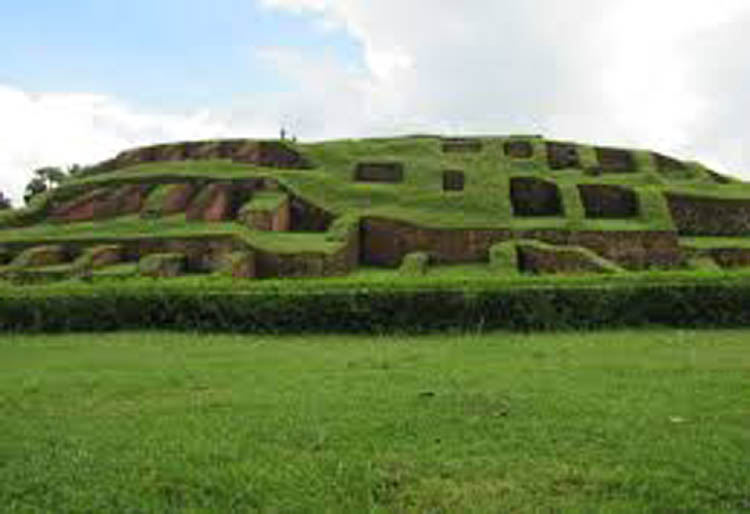Published: 12:00 AM, 25 November 2017 Last Update: 12:03 AM, 25 November 2017
Lakshindarer Gokul Medh

The Gokul Medh is also known as "behular bashor ghor". The name Lakshindarer Gokul Medh is taken from famous folk tale Laksinder and Behula. This is located at the village Gokul of the Bogra town. It's around 11 kilometer apart from the main town, and it's a part of the Mahasthangarh. This is one of the greatest archaeological discoveries from the Bogra. Gokul Medh is one of the Archaeological sites in Bangladesh.
.jpg)
It is popularly known as laksindarer medh or Behula-Laksindarer Basar-ghar (the nuptial room of the traditional heroine and hero of a popular ballad, Behula and Laksindar. It is also associated with the angry snake godess manasa. Excavations in 1934-36 by NG Majumdar revealed a gigantic shrine or stupa plinth built in the terraced cellular style of construction. The plinth was built of 172 blind rectangular cells packed solidly with earth and arranged in gradually rising tiers to support a towering polygonal shrine.

This kind of cellular style of terraced construction, in which many buttress-walls were erected side by side to support a central structure on top, is a very significant feature in the architecture of ancient Bangladesh. This structure forms the base of a shrine or stupa of 6th-7th century AD. Some terracotta plaques of the late Gupta period associated with the shrine were also found. On top of this 5 metre high podium, a square temple with a porch was built during the Sena period (11th - 12th century AD).

A stone-slab was discovered at the centre of the shrine; it consists of twelve shallow holes with a larger hole in the centre containing a tiny gold leaf bearing the figure of a recumbent bull in relief. This indicates that the shrine was a Siva temple.
The plinth was built of 172 blind rectangular cells packed solidly with earth and arranged in gradually rising tiers to support a towering polygonal shrine. This kind of cellular style of terraced construction, in which many buttress-walls were erected side by side to support a central structure on top, is a very significant feature in the architecture of ancient Bangladesh.




